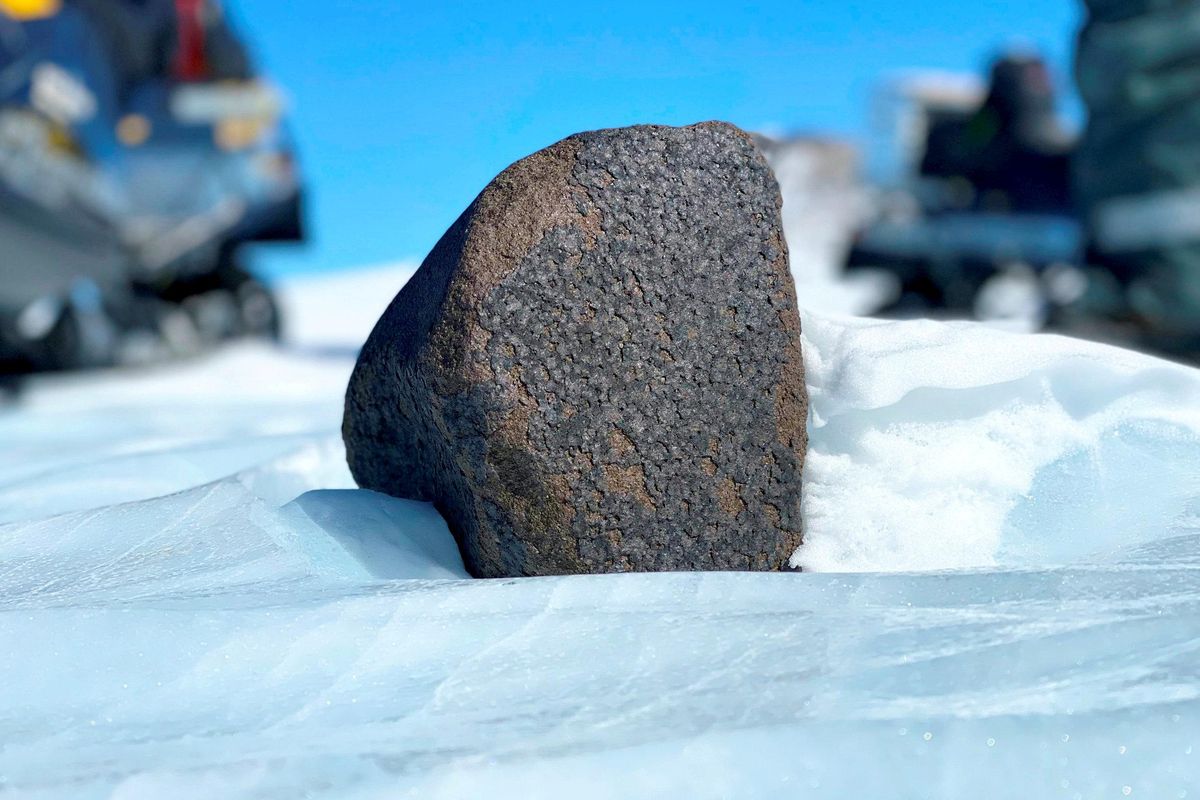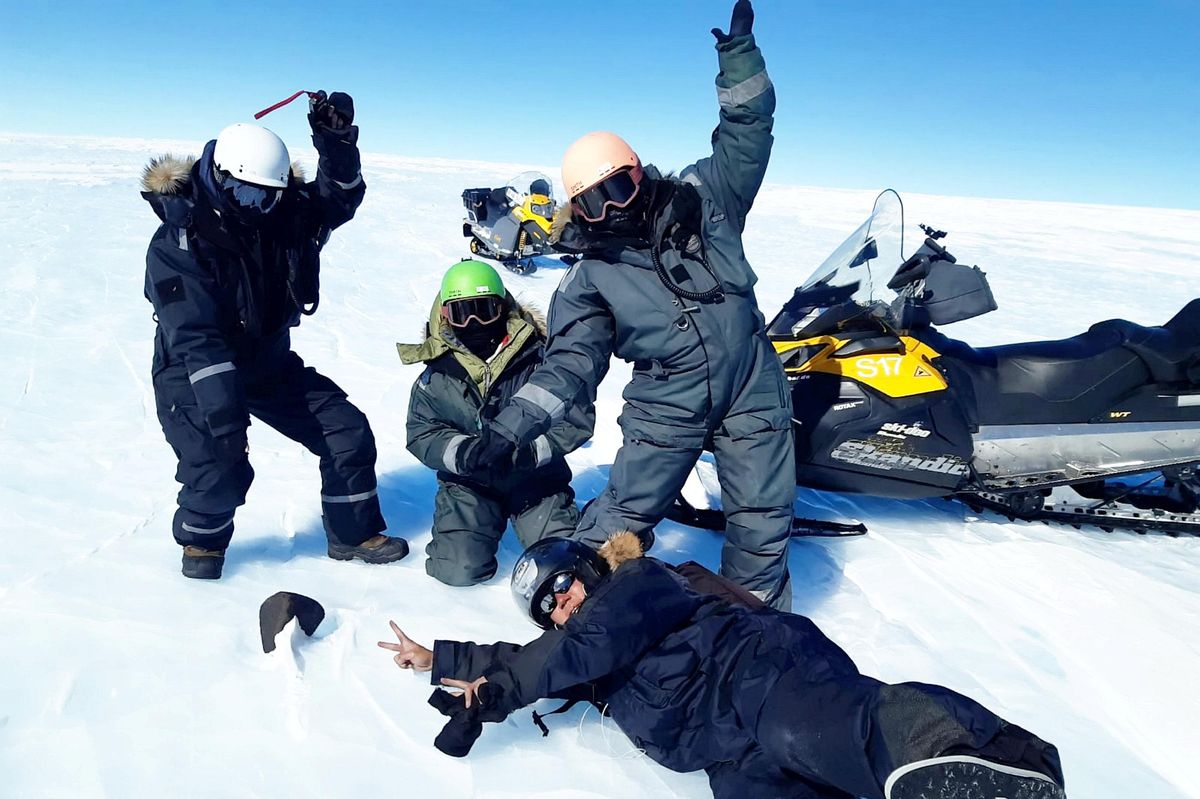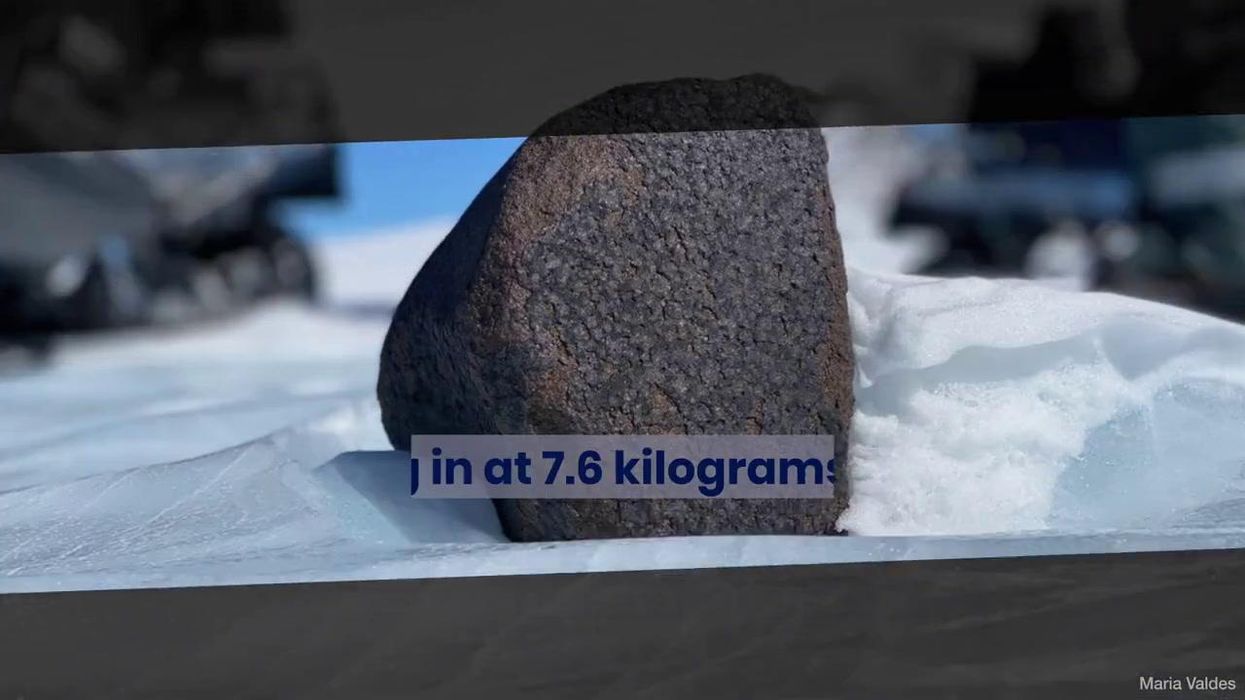Science & Tech
Harriet Brewis
Jan 31, 2023
Rare Antarctic Meteorite Is One Of The Largest Ever Found
content.jwplatform.com
Scientists were greeted by a true blast from the past after they unearthed a huge meteorite containing the oldest material in the solar system.
The striking 17lb (7.6kg) space rock, which was discovered in Antarctica, is one of the biggest ever found – and could help shed new light on the evolution of the Sun and the planets.
It appears to be a chondrite, which the most primitive type of meteorite, according to the Encyclopedia Britannica.
These rocks are believed to have originated from the asteroid belt between Mars and Jupiter, and are chemically quite similar to the Sun.
Sign up for our free Indy100 weekly newsletter
Dr Ashley King, of London’s Natural History Museum, said of the exciting discovery: "We don't tend to find too many meteorites in Antarctica that are as big as this.
"The more meteorite we have, the more sample that we have available for us to study and learn about the early solar system."
In the past century, more than 45,000 meteorites have been found on the continent - but only around 100 were as large as this one. Most are micrometeorites which range in size from tens to hundreds of grams.

The wilderness is the best place to search for surviving space rocks because cold weather provides perfect conditions for preservation. Plus, active glaciers tend to churn up any ancient ones buried beneath the ice.
Dr Maria Valdes, of The Field Museum, Chicago, said: "When it comes to meteorites, size doesn't have to matter.
"Even tiny micrometeorites can be incredibly valuable from a scientific point of view. But, of course, to find such a large meteorite like this is very rare."

Expedition members rode snowmobiles to reach promising landing sites previously mapped using satellite images, and discovered five new specimens near the Princess Elisabeth Antarctica research station.
A computer neural network helped reveal several locations relatively free of snow, which might otherwise have covered them up. One contained the meteorites.
The mega chondrite is being kept in a cool box to prevent thawing that could damage its delicate chemical structure, and is due to be sent to a lab in Belgium for further analysis.
The next step is to determine what these rocks can tell us about the universe.
Have your say in our news democracy. Click the upvote icon at the top of the page to help raise this article through the indy100 rankings.
Top 100
The Conversation (0)














